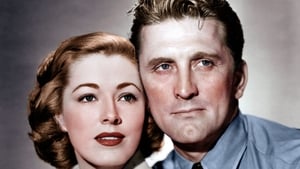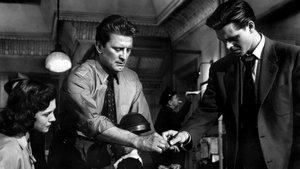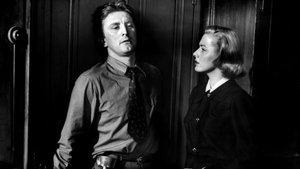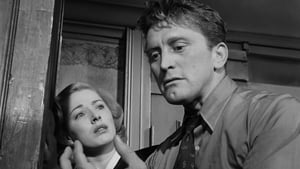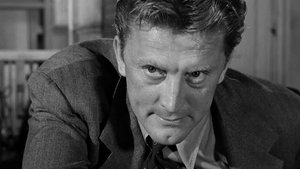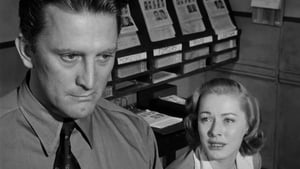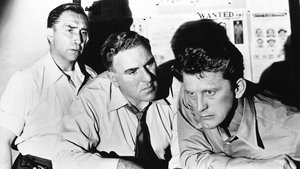Contact: info@alwanfilm.com
Video Sources 0 Views
- Watch trailer
- Detective Story

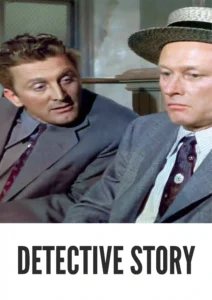
Synopsis
Table of Contents
ToggleReview: Detective Story 1951 Colorized – A Riveting Noir Drama Exploring Morality and Justice

Introduction
Detective Story, released in 1951, stands as a compelling noir drama directed by William Wyler. Set against the backdrop of a police precinct in New York City, this film delves into the complexities of morality, justice, and human nature. In this review, we’ll explore the gripping narrative of Detective Story and its exploration of the blurred lines between right and wrong.
Check The Full Colorized Movies List
Check Our Colorized Movies Trailer Channel
Understanding Detective Story 1951 Colorized: Director, Cast, and Genre
Directed by William Wyler, Detective Story boasts a talented ensemble cast including Kirk Douglas, Eleanor Parker, and William Bendix. The film falls within the genre of film noir, known for its atmospheric cinematography, morally ambiguous characters, and dark thematic elements.
Exploring the World of Detective Story 1951 Colorized: Plot and Characters
Detective Story follows the events unfolding over the course of a single day at a busy New York City police precinct. The narrative centers around Detective Jim McLeod (Kirk Douglas), whose unwavering dedication to upholding the law is put to the test when he becomes entangled in a web of personal and professional conflicts. As the story unfolds, the audience is drawn into a world of moral ambiguity and ethical dilemmas, where the line between right and wrong becomes increasingly blurred.
The Art of Film Colorization
While Detective Story was originally filmed in black and white, its early colorized version adds a new layer of visual richness and depth to its atmospheric cinematography and moody lighting. The colorization process enhances the film’s noir aesthetic and captures the gritty realism of urban life with stunning visual impact.
Early Colored Films: A Brief History
The history of early colored films is marked by innovation and experimentation as filmmakers sought to enhance the visual appeal of their movies. From hand-tinted frames to pioneering technicolor processes, the evolution of colorization techniques transformed the cinematic landscape, offering audiences a new way to experience classic stories and timeless themes.
Detective Story (1951) and Its Early Colored Version
The decision to release Detective Story in a colorized format was made with the intention of immersing audiences in the vibrant world of urban life and enhancing the film’s noir aesthetic. While some purists may prefer the original black and white version, the early colorized edition of the film adds a new dimension to its storytelling and captures the gritty realism of its atmospheric cinematography with stunning visual impact.
The Debate Over Film Colorization
The debate over film colorization continues to divide audiences and industry professionals alike. While some argue that colorization breathes new life into classic films and makes them more accessible to modern audiences, others maintain that it compromises the artistic integrity of the original work. As technology advances and filmmaking techniques evolve, the debate over colorization remains a topic of ongoing discussion within the film community.
Examining Detective Story (1951) as an Early Colored Film
Viewing Detective Story in its early colorized iteration offers audiences a fresh perspective on its atmospheric world and complex characters. The colorization process enhances the film’s noir aesthetic and captures the gritty realism of urban life with stunning visual impact. As Detective McLeod grapples with his own demons and confronts the complexities of morality and justice, the audience is drawn into a world of moral ambiguity and ethical dilemmas that resonate with timeless relevance.
Influence and Legacy: Detective Story 1951 Colorized’s Impact on Cinema
Detective Story is widely regarded as a seminal noir drama that explores themes of morality, justice, and human nature with unparalleled depth and intensity. Its atmospheric cinematography, moody lighting, and powerhouse performances have inspired generations of filmmakers and influenced the depiction of urban life and moral ambiguity in cinema. As a testament to its enduring relevance, Detective Story remains a timeless classic that continues to captivate audiences with its gripping narrative and complex characters.
Director’s Cinematic Legacy: Beyond Detective Story 1951 Colorized
William Wyler’s directorial legacy extends far beyond Detective Story, encompassing a diverse body of work that explores a wide range of themes and genres. As a filmmaker, Wyler was known for his meticulous attention to detail, innovative storytelling techniques, and uncompromising dedication to his craft. Detective Story stands as a testament to his talent and creativity, solidifying his reputation as one of the great directors of his time.
Themes Explored in Detective Story 1951 Colorized
At its core, Detective Story explores themes of morality, justice, and human nature, delving into the complexities of right and wrong in the context of urban life. Through its nuanced characters and gripping narrative, the film challenges viewers to confront their own beliefs and assumptions about morality and ethics, raising questions about the nature of justice and the pursuit of truth in a morally ambiguous world.
Reception and Controversy Surrounding Detective Story 1951 Colorized
Upon its release, Detective Story received widespread critical acclaim for its atmospheric cinematography, moody lighting, and powerhouse performances. However, the decision to release the film in a colorized format sparked debate among fans and critics alike. While some praised the colorization process for enhancing the film’s visual impact, others questioned its necessity and expressed concern about preserving the integrity of Wyler’s original vision.
Where to Watch Detective Story 1951 Colorized Online
For those eager to experience Detective Story for themselves, the film is readily available on popular streaming platforms such as Amazon Prime Video, Google Play Movies, and iTunes. Whether viewed in its original black and white format or its early colorized iteration, Detective Story offers a gripping and atmospheric cinematic experience that is sure to resonate with audiences.
FAQs About Detective Story 1951 Colorized
1. Is Detective Story based on a true story?
No, Detective Story is a fictionalized portrayal of a day in the life of a police precinct in New York City. While the characters and storyline are works of fiction, the film’s exploration of morality, justice, and human nature draws inspiration from real-life experiences and universal themes.
2. Who starred in Detective Story?
Detective Story stars Kirk Douglas as Detective Jim McLeod, the dedicated police detective at the center of the film’s narrative, and Eleanor Parker as Mary McLeod, his devoted wife. The film also features William Bendix as Detective Lou Brody, Lee Grant as Shoplifter, and Cathy O’Donnell as Susan Carmichael. Their compelling performances bring depth and authenticity to their respective roles, elevating the emotional resonance of the film and capturing the complexities of urban life with stunning clarity.
3. What is the central conflict of Detective Story?
At its core, Detective Story revolves around the central conflict of morality versus justice in the context of urban life. As Detective McLeod grapples with his own demons and confronts the complexities of right and wrong, he is forced to confront the blurred lines between justice and revenge, truth and deception. The film challenges viewers to question their own beliefs and assumptions about morality and ethics, raising provocative questions about the nature of justice in a morally ambiguous world.
4. Why was Detective Story released in a colorized format?
The decision to release Detective Story in a colorized format was made with the intention of enhancing the film’s visual impact and capturing the gritty realism of urban life. While some purists may prefer the original black and white version, the early colorized edition of the film adds a new dimension to its storytelling and immerses viewers in the atmospheric world of film noir with stunning visual clarity.
5. What is the legacy of Detective Story?
Detective Story is widely regarded as a seminal noir drama that explores themes of morality, justice, and human nature with unparalleled depth and intensity. Its atmospheric cinematography, moody lighting, and powerhouse performances have inspired generations of filmmakers and influenced the depiction of urban life and moral ambiguity in cinema. As a testament to its enduring relevance, Detective Story remains a timeless classic that continues to captivate audiences with its gripping narrative and complex characters.
6. Are there any sequels or remakes of Detective Story?
No, there are no direct sequels or remakes of Detective Story. However, the film’s enduring legacy and timeless themes have inspired countless imitators and influenced the portrayal of morality and justice in cinema. As one of the defining films of the film noir genre, Detective Story continues to resonate with audiences of all ages, reminding viewers of the enduring power of storytelling and the complexities of the human condition.
7. Where can I watch Detective Story online?
For those eager to experience Detective Story for themselves, the film is readily available on popular streaming platforms such as Amazon Prime Video, Google Play Movies, and iTunes. Whether viewed in its original black and white format or its early colorized iteration, Detective Story offers a gripping and atmospheric cinematic experience that is sure to resonate with audiences.
Conclusion
In conclusion, Detective Story (1951) remains a riveting noir drama that explores themes of morality, justice, and human nature with unparalleled depth and intensity. Whether viewed in its original black and white format or its early colorized iteration, William Wyler’s classic film offers a captivating and atmospheric journey into the heart of urban life, where the line between right and wrong becomes increasingly blurred.
As audiences are drawn into the gripping narrative of Detective McLeod’s struggle for redemption and justice, they are reminded of the complexities of the human condition and the enduring power of storytelling to illuminate the darkest corners of the human psyche. With its timeless themes and unforgettable characters, Detective Story continues to resonate with audiences of all ages, reaffirming its status as a timeless classic of the film noir genre.
